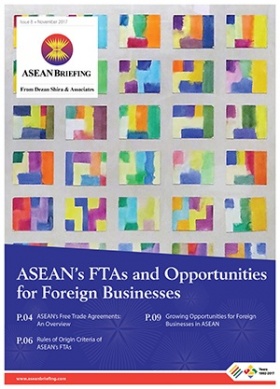Myanmar Plans Economic Zones on Chinese Border
Myanmar’s commerce ministry recently issued a call for investments in economic zones that are planned to be set up on the country’s border with China. Dubbed as “economic cooperation zones”, these projects are aimed at boosting trade and investment between the two neighbors under the framework of China’s ambitious Belt and Road Initiative (BRI).
The genesis of the economic cooperation zones
In May 2017, the commerce ministry heads of both China and Myanmar signed a memorandum of understanding to establish economic cooperation zones at the Sino-Myanmar border. A Economic Cooperation Zones Central Committee was set up to manage the specifics of the plan of establishing these zones. According to Myanmar’s commerce ministry, free flow of goods and services will be permitted across the border once the economic zones are up and running.
Where would be the new economic zones located?
Contracts to establish trading and processing zones in the provinces of Kachin, Shan (both Myanmar) and Yunnan (China) have been signed.
On the Myanmar side, economic processing areas are to be set up in Kanpiketi town in Kachin State’s Special Region1, Chinshwehaw in Shan State’s Laukkai Township and Shan State’s Muse Township as previously agreed in July 2018. The economic zones are to form part of the Myanmar-China Economic Corridor under the BRI. This corridor will connect China’s Yunnan Province with Mandalay in central Myanmar and stretch till Yangon in the south.China-Myanmar economic zones and the Belt and Road Initiative
The three planned economic zones are projects under the BRI with the objective of promoting economic integration between the southern border of China and Myanmar as well as infrastructure development on the border areas.
China aims to develop Myanmar as a trade hub for South and Southeast Asia to distribute Chinese products and services through the newly established infrastructure in Myanmar. Myanmar hopes to benefit by receiving technology transfers as well as infrastructure development for the underdeveloped regions in the west and the south. Although it appears to be a win-win project for both sides, doubts have been expressed in regard to potential problems such as debt trap for Myanmar when signing the contracts. Despite these doubts, following the signing of a memorandum of understanding between Myanmar and China in September 2018, the establishment of the China-Myanmar Economic Corridor (CMEC) is in now in planning and implementation.
The economic potential
According to Myanmar’s Minister of Commerce, Dr Than Myint, agricultural products from Myanmar will be processed and exported to China through these zones.
This is expected to create job opportunities for the local population in Myanmar and generate more tax revenue for the government. In addition, these zones are expected to promote tourism in the border areas by facilitating arrival of Chinese tourists to Myanmar through them.Additional plans are in place to construct industrial zones near the economic corporation zones, which will house processing facilities and logistics centers besides general packing facilities. The Myanmar government plans to set up small and medium-sized enterprises as a supporting industry for the larger trade and manufacturing activity in the economic corporation zones.
The economic corporation zones at the Myanmar-China border are also expected to include several other institutions to facilitate trade and investment between the two countries’ border regions. These include a taxation center to ease the process of taxation, a trade procedure office to reduce bureaucracy in trade connections as well as a currency exchange office.
About Us
ASEAN Briefing is produced by Dezan Shira & Associates. The firm assists foreign investors throughout Asia and maintains offices throughout ASEAN, including in Singapore, Hanoi, Ho Chi Minh City and Jakarta. Please contact us at asia@dezshira.com or visit our website at www.dezshira.com.








